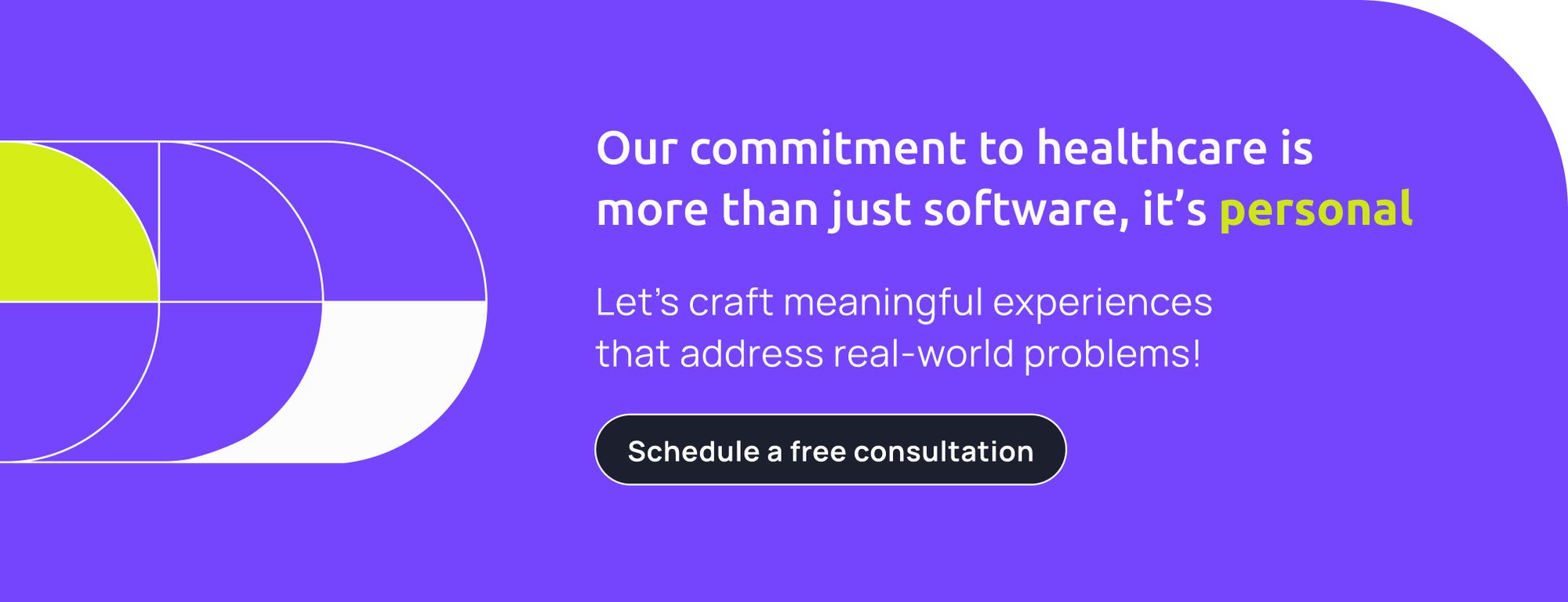Health Tech, Medical Device, Connected Health, Digital Health, Telehealth, Telemedicine, Medtech, Biotech, etc. With so many variations of what may seem like similar concepts, it's really easy to confuse them, so let's get to the point and define each one!
Health Tech

The term health tech refers to the technology used to deal with, prevent, and monitors people's health. Here, it's not about the treatment itself but tools or apps that help manage, organize, and deliver everything.
For example, healthcare providers use databases, wearables, telehealth, apps, mobile devices, remote monitoring, and more to schedule appointments, see and use patients' digital information, manage payments, etc.
In other words, it's the use of technology to measure and monitor patients' data and give feedback and insights to prevent future health complications. These health tech tools allow patients to prevent and manage their health inside and outside the hospital.
Medical Devices

Medical devices are all devices involved in the delivery of medical treatment and comply with ISO standards that the FDA demands in the US.
For example, the TinnitusDoc App, that our team at Light-it developed creates on the user's phone a therapeutic sound that patients with tinnitus must hear with any earphones before going to bed to treat their condition. Although this audio track was created with a phone, it is considered a mobile medical device in the US.
There are four types of medical device software:
- Software as a medical device (SaMD): The software can be used as a medical product without being part of a hardware medical device. Indeed, it's also called "standalone software."
- Software in a medical device (SiMD): As the name suggests, it consists of software that is part of medical hardware or equipment.
- Software as an accessory to a medical device.
- Software that is not a medical product by itself.
Connected Health

Connected health, also known as technology-enabled care (TEC), refers to a healthcare management model where technology is designed around a patient's needs. Here, all parties involved in the health process are connected; it connects patients to physicians, physicians to data, and practices to different networks to allow timely sharing of information, have better use of data and devices, and hence, improve communications that result in better delivery and health outcomes. This broad term involves others such as tech remote health services, digital health, telehealth, telecare, telemedicine, mHealth, and eHealth services.
Digital Health

Digital health refers to the interaction between tech transformations and the healthcare sector to improve healthcare services. These technologies have vast use cases, are highly regulated, and both software and hardware are involved here. It includes the following categories:
- Software as a medical device (SaaMD)
- Mobile health (mHealth) applications
- Healthcare IT solutions, EHRs and EMRs
- Wireless medical devices
- Medical device data and software
- Systems interoperability
- Wearable devices,
- Personalized medicine
- Telehealth and Telemedicine
- among others.

Telehealth
Telehealth makes reference to a range of telecommunications technologies and electronic services that physicians use to provide their healthcare services at a distance. It's a broad term for monitoring, evaluating, detecting diagnoses, preventing, and even prescribing medications online to treat patients remotely.
For example, these can go from administrative meetings to online and remote management of health systems. Also, it involves healthcare education services and non-clinical training, delivering health information for physicians and patients, and remote monitoring and consultations (telemedicine), among others.
Telemedicine:
As mentioned before, one type of telehealth is telemedicine, which precisely consists of remote clinical services. Specifically, it's when physicians use technology to assist their patients at a distance via video calls or any other type of remote communication.
We all know how these last years, with the pandemic, the demand for medical assistance has increased significantly, which has implied a huge challenge for all physicians. Solutions like these were the ones that allowed more access to healthcare services in remote places without compromising PHI security or privacy, helped to increase efficiency in medical services, and even avoided burnout of providers.
Medtech
Medtech refers to the technology used inside the clinic or hospital to create a diagnosis and treatment that improves people's health, not so much about prevention like Health Tech.
For example, Med Tech uses machines, equipment, specialistic apparatus, devices, and other tools inside hospitals to deliver a better, faster, more accurate, and safer treatment. Also, using such med tech tools is highly regulated as they directly and severely impact patients' health.
Biotech
Finally, Biotech can be defined as the technology based on living organisms that aims to improve patient treatments. It's based more on the biological point of view and is highly used in labs and pharmacies.
For example, BioTech in healthcare uses cell and genetic information to create new drugs, modify organisms, develop vaccines, etc., and predict their effect on people's health. It can also be used in agriculture as it can create new species that are more resistant to certain conditions or effective for specific purposes. It's important to consider that Biotech is highly regulated and must comply with numerous rails before launching anything to the market as they may have long-term effects or dangerous side effects on people's health.
